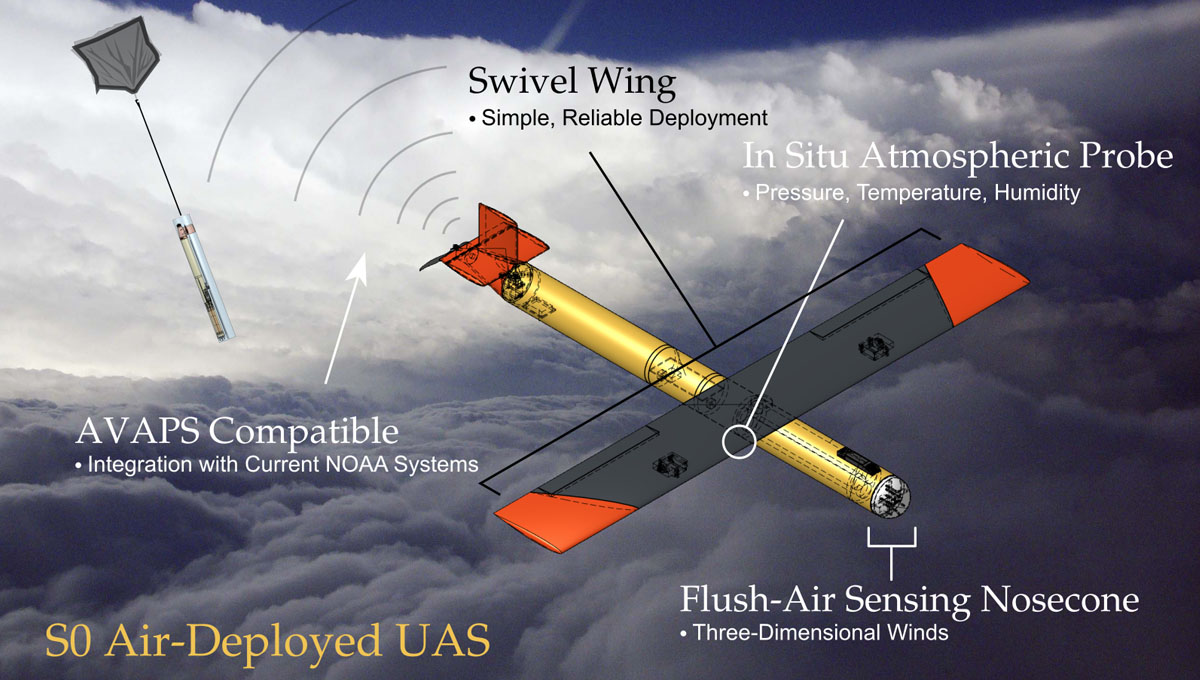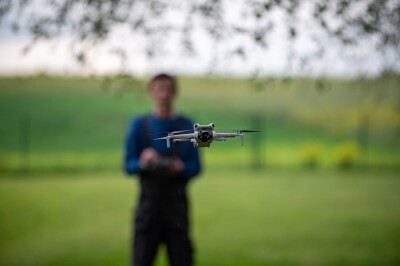For a few years now, the National Oceanic and Atmospheric Administration (NOAA) has been investing in unmanned aircraft and other technologies to increase weather observations designed to improve the accuracy of hurricane forecasting. Recently, the agency awarded Black Swift Technologies with a contract to develop a new air-deployed unmanned aircraft system (UAS) for this purpose.
In 2017, NOAA used successfully deployed six Raytheon’s Coyote, a small and tube-launched UAS, from a hurricane hunter into the eye of Hurricane Maria in 2017. However, Black Swift Technologies CEO, Jack Elston, told us “the Coyote is quite expensive and not originally intended for use in meteorology. As such, the measurements it makes can be significantly improved upon with a purpose-built aircraft.”Founded in 2011, Black Swift Technologies (BST) delivers UAS capable of flying scientific payloads in demanding atmospheric environments, such as high-altitude, arctic, desert, corrosive particulates, and strong turbulence. The company’s aerial platforms are used for specialized atmospheric research missions in extreme conditions, including monitoring and assessing wildland fires, volcanoes, tornadoes, and hurricanes.Having won the first phase of NOAA’s research project, based on a preliminary study with a few prototypes for the new UAS, BST “was selected to continue the work, and have been awarded a two year grant to provide NOAA with an aircraft they can deploy into the storms”, Elston said.Similar to the Coyote, BST’s proposition is a tube-launched UAS, the S0 Air-Deployed, which can launch from an aircraft, such as NOAA’s Lockheed P3 Orion. The idea is to replace “radio dropsondes already used by NOAA in these environments, reducing the workload of the operators and keeping with the current overall CONOPS.” By sending out a swarm of these drones close to the sea-surface and eyewall of the storm, BTS can capture essential data.“Main measurements made will be 3-dimensional wind velocity, pressure, temperature, humidity, and sea surface temperature,” Elston explained. “These parameters are key for determining storm parameters that directly relate to strength and aid in predicting the direction of travel.”Since BST has access to the Airborne Vertical Atmospheric Profiling System (AVAPS), the S0 Air-Deployed UAS doesn’t need to receive any kind of communication after release without the addition of a separate command and control link. It can fly autonomously “in a turbulent environment while integrating critical components, including those necessary for 3D wind sensing, along with interfaces to the RD-41 sonde and radio.” Since the drone isn’t recoverable after a flight, it’s essential it relays the entirety of the collected data during the flight.Compared to Raytheon’s Coyote, Elston explained their solution “is several times less expensive, allowing for more of them to be used per storm, which will hopefully allow for much better forecasting. Additionally, our vehicles have longer endurance, greater communication range, and allow for automatic tracking of the eyewall without operator input.”“With the destructive force demonstrated by hurricanes in 2018 (Florence and Michael in particular), hurricane forecasting remains a priority for scientists researching and striving to predict the paths and intensities of these storms,” states Elston.Subscribe
The information you submit will be stored and used to communicate with you about your interest in Commercial UAV News. To understand more about how we use and store information, please refer to our privacy policy.
June 24, 2019
Using a Swarm of Drones to Research Hurricanes















Comments